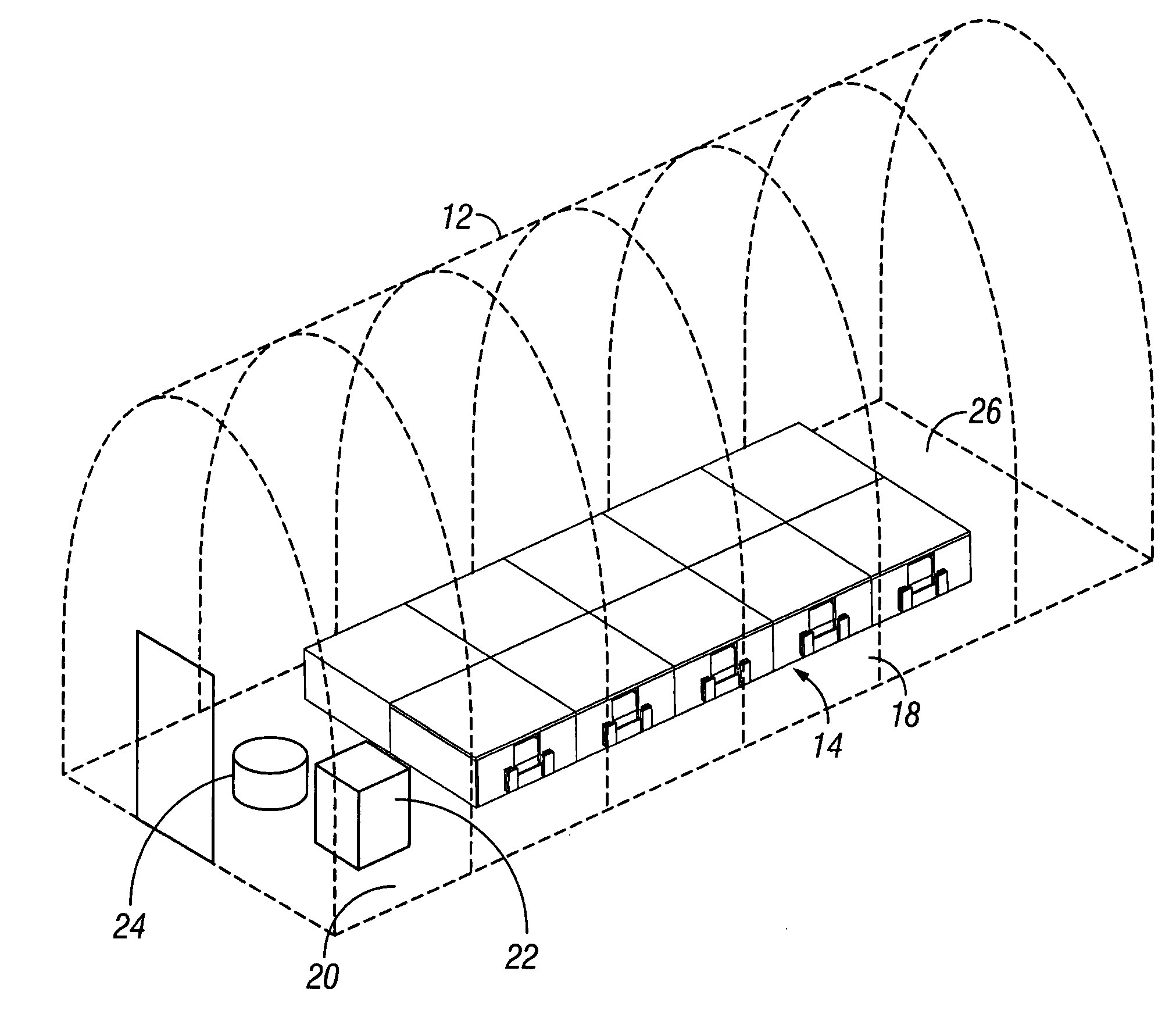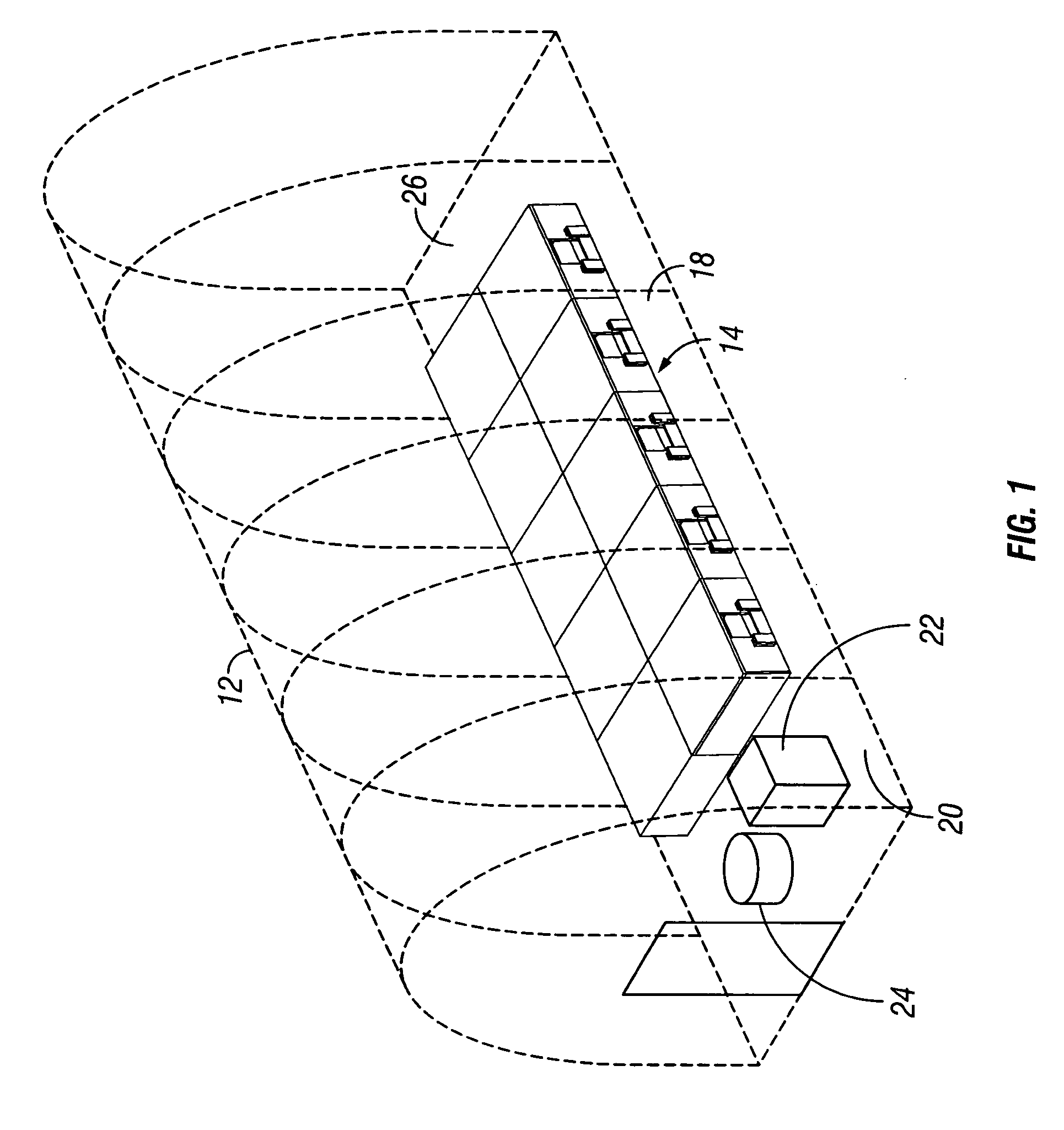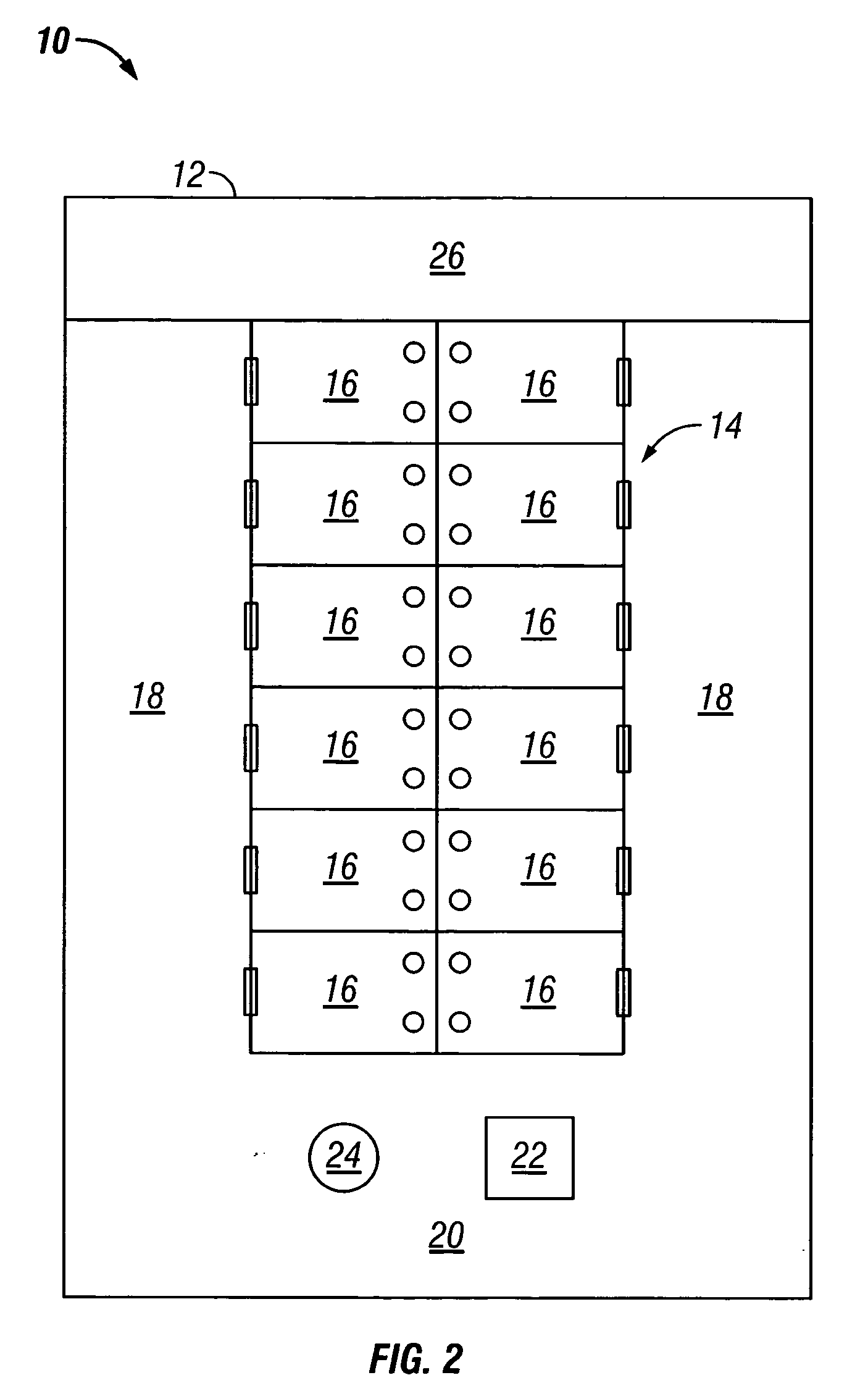Hog farrowing system for use in a cold environment and method of use
a cold environment and hog farrowing technology, applied in the field of hog farrowing systems, can solve the problems of low milk let-down, physical injury, and the inability of the hog to move, and achieve the effect of preventing the hog from being harmed
- Summary
- Abstract
- Description
- Claims
- Application Information
AI Technical Summary
Benefits of technology
Problems solved by technology
Method used
Image
Examples
Embodiment Construction
[0044] As seen in FIGS. 1 and 2, the farrowing system is generally designated in the drawings with the reference numeral 10. The farrowing system may also be referred to as the NATURAL FARROWING SYSTEM™. The farrowing system utilizes a generic farrowing building 12, typically a hoop or pole barn. The floor of the farrowing building has a farrowing box area 14 which has a series of farrowing boxes 16 grouped together. The farrowing box 16 may also be referred to as NESTING BOX™.
[0045] As illustrated, the farrowing boxes 16 are grouped together to conserve heat. Alternatively, these boxes may be separated. Also, the farrowing boxes 16 as illustrated have their backs to one another such that an entrance to the farrowing box 16 is pointed outward. The farrowing boxes 16 may also be formed in a single lane. The number of farrowing boxes 16 are determinate upon the size of the farrowing building 12 and general guidelines regarding layout of the farrowing building 12.
[0046] Layout consid...
PUM
 Login to View More
Login to View More Abstract
Description
Claims
Application Information
 Login to View More
Login to View More - R&D
- Intellectual Property
- Life Sciences
- Materials
- Tech Scout
- Unparalleled Data Quality
- Higher Quality Content
- 60% Fewer Hallucinations
Browse by: Latest US Patents, China's latest patents, Technical Efficacy Thesaurus, Application Domain, Technology Topic, Popular Technical Reports.
© 2025 PatSnap. All rights reserved.Legal|Privacy policy|Modern Slavery Act Transparency Statement|Sitemap|About US| Contact US: help@patsnap.com



